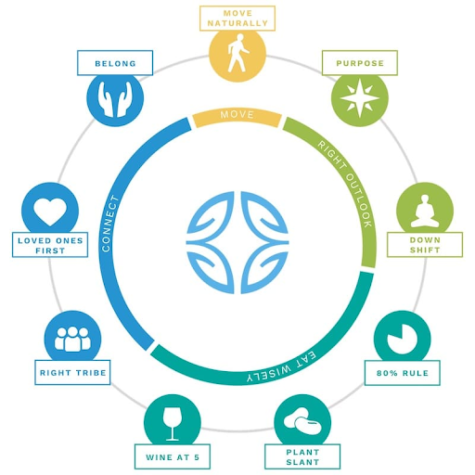Addiction and the Fentanyl Crisis
Rising drug overdose counts are driven by illicit fentanyl and similar narcotics.

Victims of fentanyl at DEA headquarters in Arlington, Virginia.
April 7, 2023
(Editor’s note: the Horizon Sun recognizes that drugs and overdose can be a sensitive subject for American families and individuals struggling because of substance abuse. We urge anyone dealing with this problem to seek professional help.)
The Bloomberg American Health Initiative states that more Americans died from overdoses in 2015 than from gun-related homicides, car accidents, HIV-related issues, and skin cancer. Since then, the numbers have increased significantly. The deadly synthetic opioid fentanyl and other related compounds are increasingly added to heroin and other street narcotics to make them even more lethal and is to blame for the current rise in overdoses. Perhaps most outrageous is that many users of illicit drugs are unaware that they are ingesting fentanyl at all.
In the first two years of the pandemic, the number of monthly drug overdose deaths significantly tripled among teenagers aged 10 to 19. Deaths increased from 31 in July 2019 to 87, their highest point, in May 2021, then decreasing to 51 in December 2021.
The Center for Disease Control and Prevention says it’s crucial for teenagers to understand and recognize the signs and dangers of fentanyl. Patrick L. Purdon, PhD, the Nathaniel M. Sims Endowed Chair in Anesthesia Innovation and Bioengineering at Massachusetts General Hospital (MGH), and his colleagues revealed in a study of electroencephalogram tests, which measure brain activity according to the Mayo Clinic, that fentanyl begins to impair breathing about four minutes before there’s any change in alertness. Purdon says this symptom of fentanyl use is what makes it so deadly, as they may be unaware that they have ingested the drug before it causes damage.
CNBC says there’s evidence that 25 percent of teen overdoses involved counterfeit drugs, which includes fentanyl. During the pandemic, overdose deaths for people between the ages of 10 and 19 almost tripled. 41 percent of teens who experienced a drug overdose had experienced mental health issues.
Dr. E. Scott Hadland, a pediatrician and addiction specialist at MGH and Harvard Medical School, says that if a substance is marked as a prescription pill like Oxycodone or Xanax, teenagers and young people may not realize that the drugs they take may contain fentanyl. In the U.S, the illicit drug supply is very dangerous partly because substances sold as one drug may contain a mixture of others. Xylazine, or the “Tranq” is one such narcotic, as it’s a powerful sedative approved for veterinary use, it’s not an opioid and therefore cannot be reversed with Naloxone. Benzodiazepines are also highly dangerous, causing the signals traveling from the brain to the rest of the body to slow down.
The DEA revealed that their law enforcement partners have seized brightly-colored fentanyl and fentanyl pills in 26 states since August 2022. DEA Administrator Anne Milgram says rainbow fentanyl, fentanyl pills and powder that resemble candy are sold by drug cartels to drive addiction amongst kids and young adults.
According to the Alcohol and Drug Foundation, Hadland says some teenagers use illicit drugs as their way to cope with a mental health disorder or addiction, and parents should watch for red flags. For example, teens often use alcohol, marijuana, or nicotine before they turn to riskier drugs; it’s especially concerning if the teen uses substances excessively. He also adds that many young people using substances and struggling with mental health problems or addiction are going completely unhelped.
In response to fentanyl overdoses, some cities and states are pushing for harsher sentencing. In New Jersey, a new bill would make manufacturing and distribution 5 grams a first degree crime, but some experts say harsher sentencing isn’t the answer, according to NPR. Bre Azanedo, a program manager with Black Lives Matter Paterson, is one of those that disagree. She works with a program that does harm reduction, they deliver food, clothes, safe using supplies, and Naloxone. Her dad was a drug user who went to prison when she was 18, leaving her to become an adult overnight. She went to places where she knew people were using, train tracks, behind an abandoned building, and the pharmacy parking lot. “Someone needed to make sure those people were okay, I wanted to be the person I wish my Dad had.”
Virginia Krieger, one of the co-founders of Lost Voices Of Fentanyl, agrees with experts who say incarceration isn’t the answer to helping addicts, but it’s complicated to her. She lost her daughter due to an overdose on a laced pill she took for back pain. Since then, her son spiraled into a meth addiction, she doesn’t know if he’s alive or not. “I would rather see my son in a jail cell, than dead.” Her priority is to go after the big drug traffickers that pump fentanyl over the US-Mexico border. “This isn’t a war on drugs. This is a war on fentanyl. If we can get that drug supply, then we can get back to what we know: take care of people.” People caught up in an epidemic that has killed over a hundred thousand in just last year. “That’s more than we lost during the 20 year Vietnam war. That should be an alarm, I don’t know why it isn’t sounding.”
The present fentanyl crisis is part of a larger public health problem found in narcotics, especially among young people. Taking steps to reduce the effect of these drugs on American individuals, families, and communities is a large part of current medicinal public policy decisions. Johns Hopkins Bloomberg School of Public Health and Time have information about low-cost test strips for reducing fentanyl overdoses and how to use naloxone to save a life.















